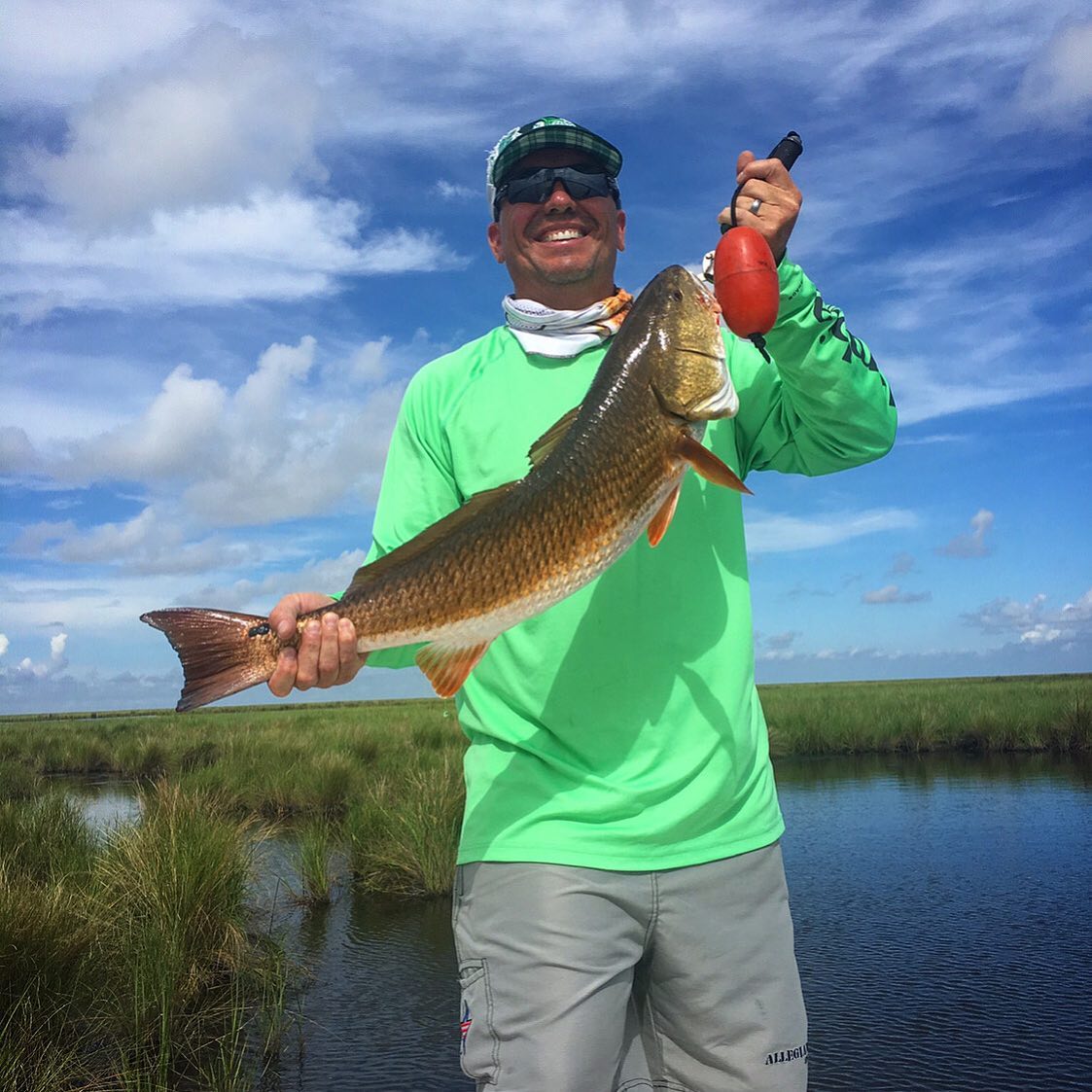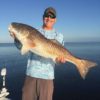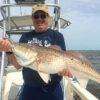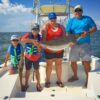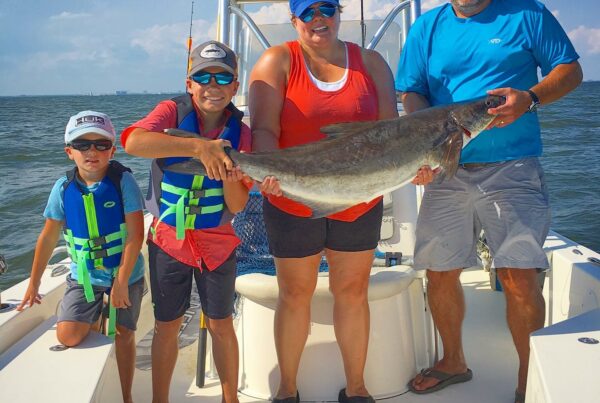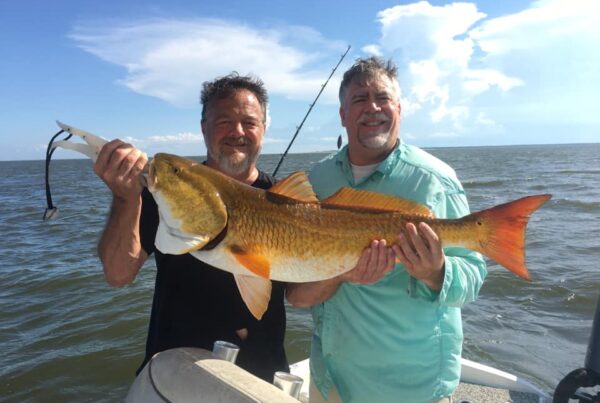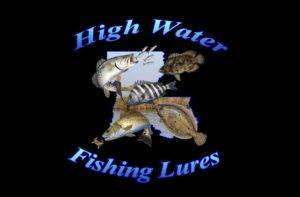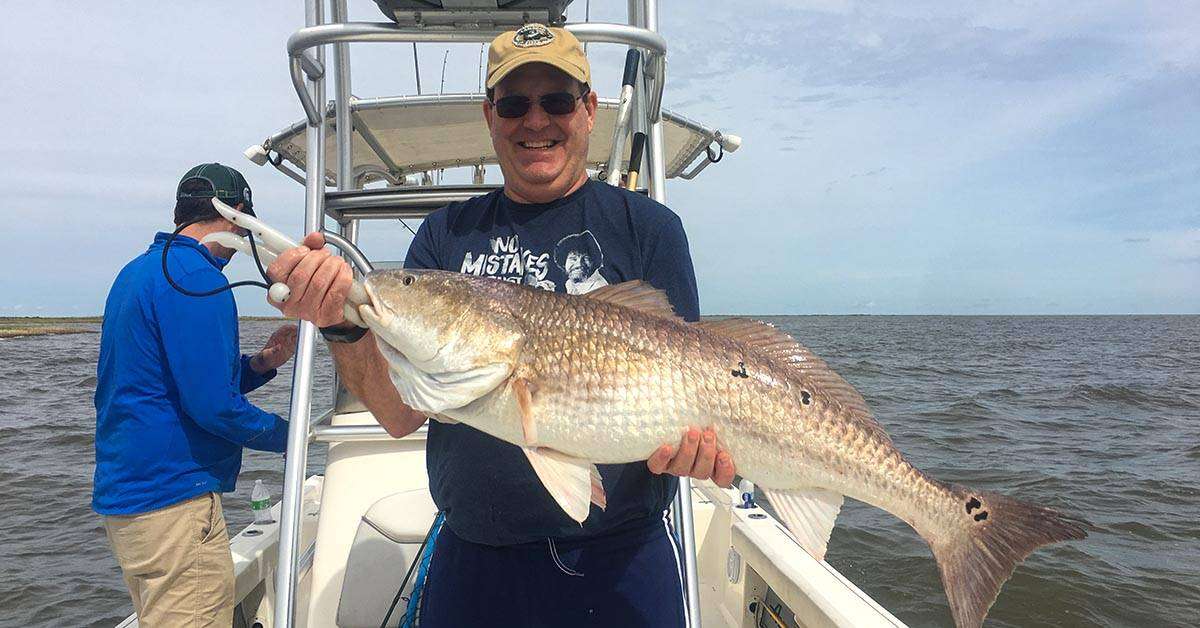
Last Updated on January 23, 2024 by Eric Bonneman
When it comes to redfish, these robust and spirited creatures hold a special place in the heart of every angler. Renowned for their fighting spirit and distinct appearance, they offer a unique challenge that’s both rewarding and intriguing. This guide is about laying down the straight facts on redfish, focusing on their behavior, traits, and how they adapt to the changing seasons, especially in the rich fishing grounds of Louisiana and Mississippi’s Biloxi Marsh.
You’ll find insights into the physical characteristics that set redfish apart, like the striking spot near their tail and their impressive size range. But it’s not just about looks; understanding the behavior of redfish through the seasons is crucial. From the cold retreats in winter to the active shallows in the summer, you’ll get a clear picture of their life cycle and habits.
This guide aims to arm you with knowledge, from the subtle changes in redfish behavior as the waters warm and cool to the best times of year to find them in different parts of the marsh. It’s straightforward, no-nonsense information designed to enhance your understanding and respect for these formidable fish.
So, whether you’re a seasoned angler or just getting started, this guide is your go-to resource for getting to know redfish, ensuring that every fishing trip is as informed as it is enjoyable. Let’s get started.
Redfish
Introduction to Redfish: Redfish, scientifically known as Sciaenops ocellatus, is a species commonly found in the Atlantic Ocean, from Massachusetts to Florida in the United States, and down to the Gulf of Mexico. This species is renowned for its distinctive appearance and behavior, making it a subject of interest not only for anglers but also for marine biologists.
Physical Characteristics: Redfish are easily identifiable by their robust, elongated body, and their most notable feature, a large black spot on the upper part of the tail base. While it’s commonly believed that this spot is a mimicry mechanism to confuse predators into attacking the fish’s tail instead of its head, recent studies suggest it may also play a role in schooling behavior. These fish exhibit a color palette that ranges from a deep, reddish copper hue to a lighter, almost silvery shade, depending on their habitat and age.
The average size of a redfish can vary significantly based on their age and the specific conditions of their habitat. Juveniles typically measure between 10 to 24 inches in length, while adults can grow up to 61 inches and weigh as much as 51 pounds. Their body is covered with large, heavy scales, and they have a sloped forehead with a large mouth and a protruding lower jaw.
Habitat and Distribution: Redfish are commonly found in shallow waters, especially near the coastlines. They have a preference for estuaries, lagoons, and bays – environments where saltwater mixes with freshwater. These areas are rich in resources like shelter and food, making them ideal for the growth and development of redfish. They are also known to inhabit offshore waters up to depths of 200 feet, but juveniles are more commonly found in shallow inshore waters where they can easily find food and shelter from predators.
Diet and Feeding Habits: Redfish are opportunistic feeders with a diet that primarily consists of crustaceans such as shrimp and crabs, in addition to smaller fish and mollusks. They have a unique feeding habit where they use their downward-facing mouth to forage on the seabed, often tailing (showing their tails above the water surface) in shallow waters. This behavior is a sign of redfish feeding on the bottom, where they use their robust bodies to root around in the mud and sand to uncover hidden prey.
Reproductive Behavior: The reproductive behavior of redfish is another area of interest. They reach sexual maturity at the age of 3 to 5 years. Spawning season typically occurs between August and November when water temperatures are between 71 to 75 degrees Fahrenheit. During this period, redfish migrate offshore to spawn in the nearshore waters. Females release eggs into the water, which are then fertilized by the males. One female can release up to 2 million eggs during a single spawning season, ensuring the continuity of the species despite predation and other environmental challenges.

Targeting Redfish in Louisiana and Mississippi’s Biloxi Marsh: Seasonal Strategies
The Louisiana and Mississippi Biloxi Marshes represent a unique ecosystem offering year-round opportunities for targeting redfish (Sciaenops ocellatus). The dynamic seasonal changes in this region demand specific strategies for anglers looking to maximize their success. This section delves into how these seasonal shifts affect redfish behavior and the best approaches to target them throughout the year.
Winter (December – February)
In winter, redfish retreat to the deeper channels, bayous, and oyster bed edges of the Biloxi Marsh, seeking warmer water depths. Anglers should opt for jigs and slow-sinking lures, presenting them near the bottom to match the reduced activity level of the redfish in the colder temperatures.
Spring (March – May)
With the onset of warmer temperatures, redfish return to the shallows, frequenting flats near grass beds and marsh edges. This period, marking the beginning of the spawning season, sees redfish more aggressive and responsive to bait. Utilizing topwater lures and soft plastics can yield great results, and clear conditions make sight fishing highly effective.
Summer (June – August)
Summer’s peak spawning season sees redfish at their most active, aggressively feeding in the outer marsh edges and grass beds, particularly during cooler morning and evening periods. Anglers will find topwater lures exciting to use at dawn, while spoons and spinnerbaits become the go-to throughout the day, especially in areas with moving currents.
Fall (September – November)
Regarded as the prime redfish season in the marsh, fall sees a feeding frenzy as the fish bulk up for winter. This period is ideal for a variety of fishing techniques, with clear waters enhancing sight fishing opportunities. Anglers should watch for bird activity signaling baitfish and redfish presence, and be prepared to explore the transitional areas between shallow and deeper waters.
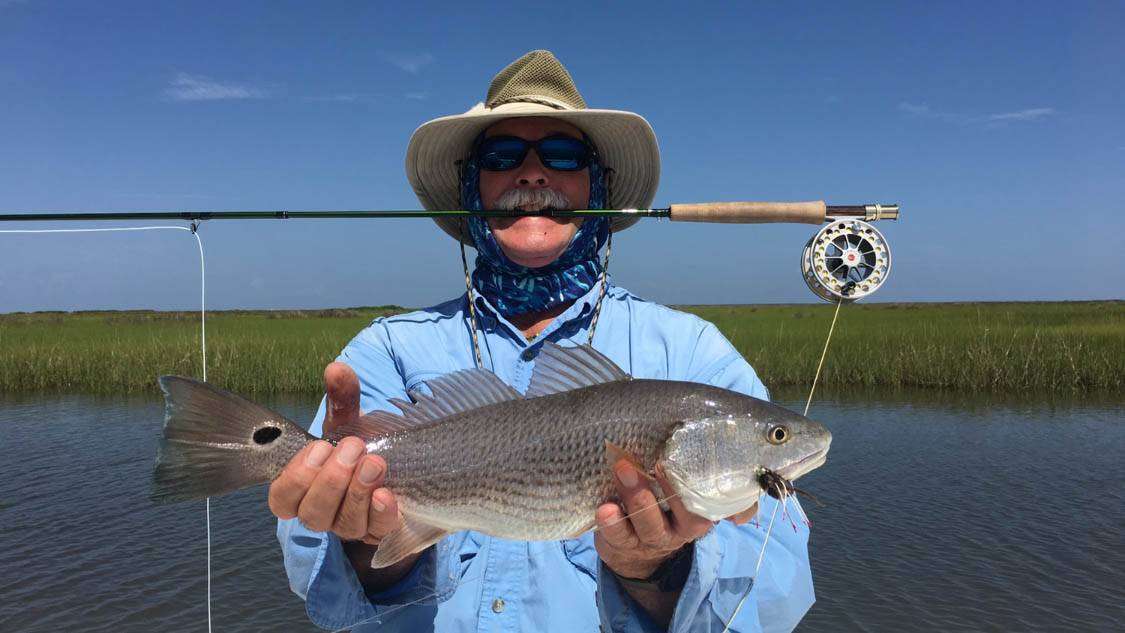
Legends of the Lower Marsh: Your Destination for an Unmatched Redfish Experience
After soaking in all the details about redfish, you’re probably keen to put that knowledge to real use. That’s exactly where Legends of the Lower Marsh steps in. Known for their expertise in Louisiana Marsh fishing, they don’t just offer a regular fishing trip; they craft a journey that takes you to the core of the Biloxi Marsh. With them, you’re not just a spectator; you’re an integral part of an immersive experience. They guide you through the intricate maze of waterways, revealing hidden spots where redfish thrive, and ensuring that every moment on the water is packed with potential and the promise of vibrant life.
The Biloxi Marsh: A Fisherman’s Paradise
In the Biloxi Marsh, every cast is a story waiting to unfold. This place isn’t just about redfish, though they’re certainly stars of the show. It’s about the whole cast of characters — speckled trout, black drum, flounder, and triple tail — each adding its own twist to your fishing tale. And the marsh itself? It’s a place of quiet beauty, where the water whispers stories of life below the surface.
But don’t let the calm scenery fool you. The marsh is a hub of action, and with Legends of the Lower Marsh, you’re in the hands of folks who know these waters like their own backyard. They’re not just guides; they’re locals who live and breathe the marsh, ready to share its secrets and make your fishing experience one for the books.
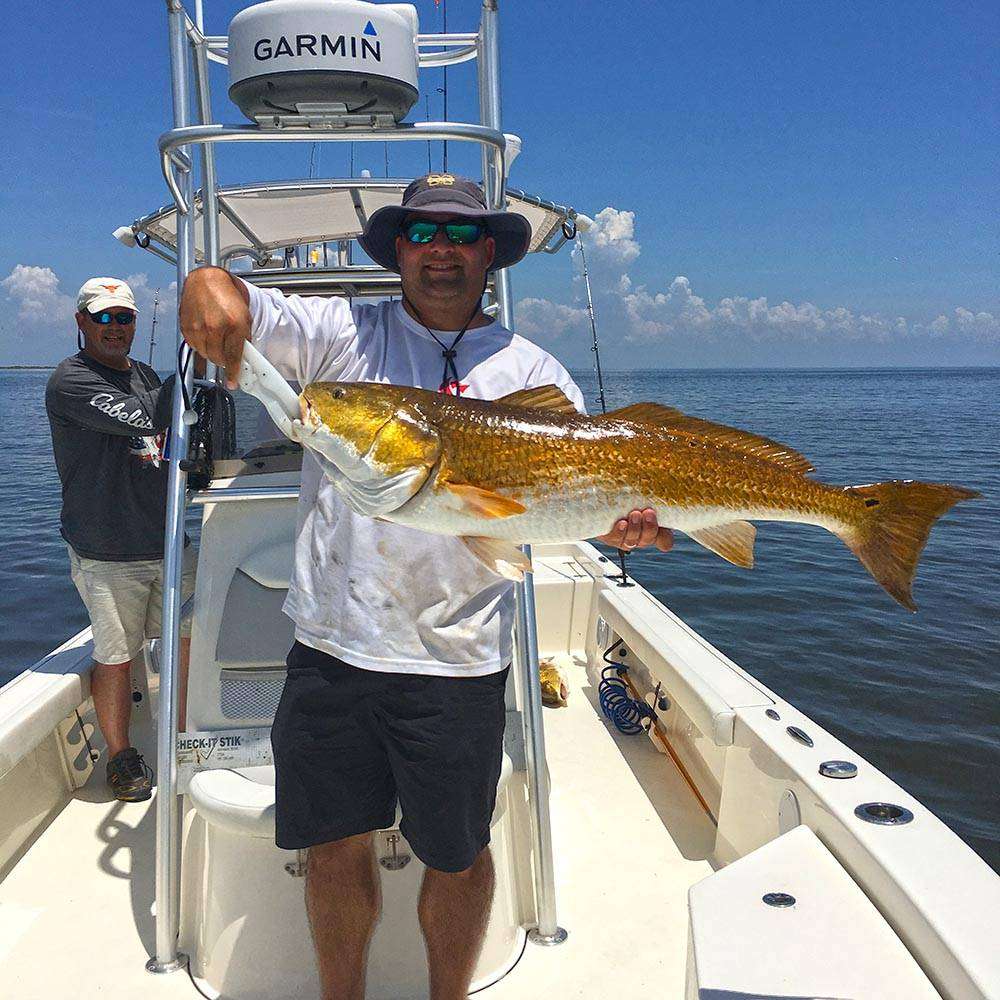
Choosing Legends of the Lower Marsh
Going with Legends of the Lower Marsh means you’re choosing more than just a fishing trip. You’re choosing guides who respect the marsh and everything in it. These guys are pros, not just at finding the best fishing spots but at understanding the rhythm of the marsh. They know that every angler is different, so whether you’re a seasoned pro or someone who’s just starting, they’ve got your back.
When you’re out there on the water with Legends of the Lower Marsh, it’s not just about landing the biggest catch. It’s about feeling the pulse of the marsh, understanding its moods, and becoming part of the story that unfolds with every cast. It’s about those quiet moments on the water just as much as it’s about the thrill of the catch. It’s fishing, sure, but it’s also about connecting with nature in a way that’s genuine and respectful.
So, if you’re ready to turn your redfish knowledge into action, Legends of the Lower Marsh is the way to go. It’s not just about the fish; it’s about the experience, the environment, and the memories you’ll create. The marsh is calling, and Legends of the Lower Marsh is ready to show you its wonders.
Ready to take the plunge? Book your trip today with Legends of the Lower Marsh. Cast your line into waters rich with life, guided by the best, and make your next fishing story one of legend. Don’t just fish – experience the marsh with the very best. Book now and make your mark in the world of redfish fishing.

